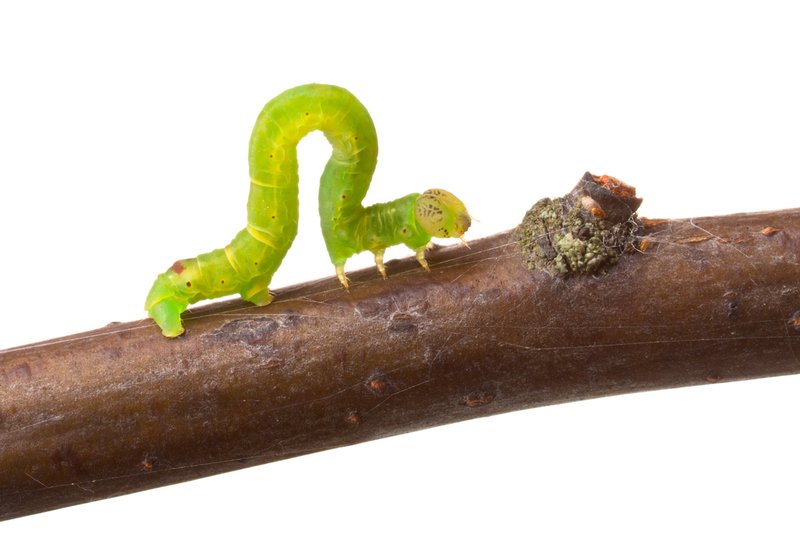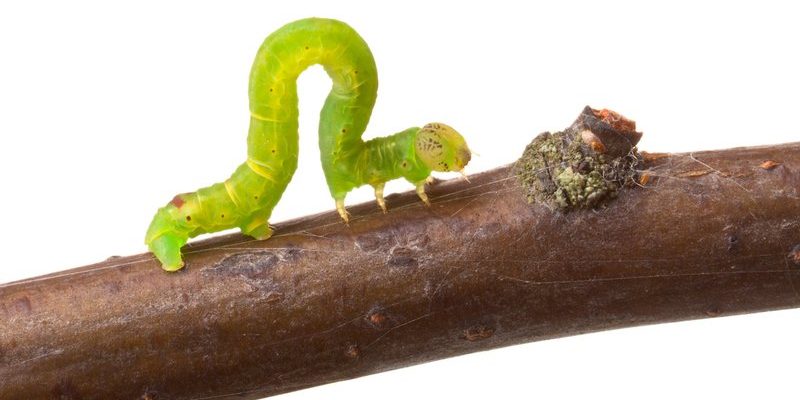
Inchworms, also known as **measuring worms**, belong to various species in the family Geometridae. Their journey from egg to adult moth is truly a marvel of nature. It’s like watching a magician disappear and reappear in a new form! Let’s dive into the lifecycle of common inchworm species and explore what makes each stage special.
What Are Inchworms?
Before we jump into their lifecycle, let’s get a clearer picture of what inchworms are. Essentially, inchworms are the larval form of moths in the Geometridae family. They have a unique way of moving, which is where they get their nickname. Instead of crawling like typical caterpillars, inchworms “measure” their way along with a distinctive looping motion.
You might be wondering how they got this name. Well, when inchworms move, they create a little loop with their bodies, then stretch out their front halves and inch forward. It’s somewhat reminiscent of a tiny, green measuring tape unrolling and rolling up again. This makes them really interesting to observe, especially if you’re out in nature!
Inchworms are typically green or brown, allowing them to blend into their surroundings — clever little critters! They feed on the leaves of various trees and plants, which can sometimes be a point of concern for gardeners. Understanding their lifecycle helps us appreciate their role in the ecosystem and manage their populations effectively.
Stage 1: Egg
The lifecycle of inchworms begins with eggs, which are usually laid on the undersides of leaves in late spring or early summer. These tiny, round eggs are often hard to spot, blending in seamlessly with their surroundings. Depending on the species, a female moth can lay anywhere from 100 to 300 eggs — that’s a lot of potential inchworms!
Once the eggs hatch, which typically takes about 1-2 weeks, the tiny inchworms emerge. They’re incredibly small, often no longer than a few millimeters. At this stage, they might look a bit vulnerable, but they’re ready to start their journey!
Eggs are sensitive and need specific conditions to thrive. They prefer sheltered spots to protect them from predators and harsh weather. Understanding this can help in featuring them during nature walks or while gardening, as you might unintentionally disrupt their early development.
Stage 2: Larva (Inchworm)
After hatching, the inchworm enters the larval stage. This is where they truly earn their name. During this phase, they start to munch on leaves, growing larger and preparing for their next transformation. Depending on the species and environmental conditions, this stage can last several weeks to a few months.
While they’re eating, inchworms can sometimes be a bit *problematic* for plants. They can quickly defoliate trees if their populations grow too large. Gardeners often need to keep a watchful eye on them during the summer months.
Inchworms go through several **instars** – stages between molts where they shed their skin to accommodate their growing bodies. Each time they grow, they might take on a slightly different appearance, adding to their charm and making them diverse creatures. It’s a bit like them donning new outfits as they’re ready for the next big reveal!
Stage 3: Pupa (Chrysalis)
Once inchworms have finished growing, they enter the pupal stage. This is a crucial transformation phase where they become **chrysalises**. Depending on the species, inchworms may spin a silk cocoon or simply attach to a leaf or branch using threads they produce. It’s a bit like wrapping themselves in a cozy blanket while they undergo a dramatic change.
During this stage, their bodies are busy doing some serious internal restructuring. The inchworm is converting into a moth, and this process can take anywhere from a couple of weeks to several months. It’s fascinating to think about what’s happening inside the chrysalis — it’s a literal makeover going on!
This stage is vital for their survival because they’re very vulnerable as chrysalises. Birds and other predators often see them as easy snacks. They rely on the protection of their chosen location, and this is where nature’s built-in camouflage often plays a significant role.
Stage 4: Adult Moth
Finally, the last stage of the inchworm’s lifecycle is emerging as an adult moth. When they’re ready, they break out of their chrysalis, often in the early morning or late evening. This is a thrilling time because they’ve transitioned from a caterpillar to a moth!
Adult inch moths are typically larger and can have beautiful patterns on their wings, which serve to attract mates and deter predators. They usually live for about 1-2 weeks, just enough time to reproduce. During this time, they’ll seek out suitable mates and lay eggs, continuing the cycle.
Adult inchworms also play a role in the ecosystem as pollinators. They might not be as flashy as butterflies, but they contribute to plant reproduction. This intertwining of their lifecycle with nature emphasizes the importance of every stage — from the tiny eggs to the beautiful moths fluttering around.
Environmental Factors Affecting Inchworm Lifecycle
The lifecycle of inchworms can be significantly impacted by various environmental factors. Weather, food availability, and predators all play a role in how successfully they develop. For instance, a harsh winter can affect the egg-laying patterns in spring, while a sudden spike in temperature might prompt early hatching.
Food availability is crucial for inchworms, especially during the larval stage. If there aren’t enough leaves to munch on, their growth can be stunted, leading to fewer adult moths. It’s important to recognize that inchworms are part of a larger ecosystem and their survival is often linked to the health of their environment.
Predators also have an impact on their lifecycle. Birds, wasps, and other insects may feast on inchworms during any of their stages, particularly when they are most vulnerable as larvae or pupae. This natural balance is vital for maintaining the population of inchworms without letting them overtake their habitats.
Why Understanding Inchworm Lifecycles Matters
Grasping the lifecycle of inchworms isn’t just an entertaining biology lesson; it’s essential for several reasons. Many gardeners want to keep their plants healthy, and knowing when inchworms are most active helps with managing their populations.
Further, inchworms play a vital role in the food web. They provide nourishment for birds and other wildlife, keeping the ecosystem balanced. By understanding their needs and behaviors, we can help ensure that they thrive while also protecting our gardens.
In essence, recognizing the lifecycle of inchworms enables us to appreciate the beauty of nature’s intricate processes. It leads us to take more informed actions, whether as gardeners, nature enthusiasts, or just curious observers.
At the end of the day, inchworms may seem small and simple, but their lifecycle is a reminder of the complexity of life. By learning about them, we’re not just observing; we’re engaging with and valuing the world around us.
In conclusion, inchworms offer much more than just a curious sight in the garden. Their lifecycle, complete with fascinating transformations, connects us to the broader natural world. So next time you see an inchworm inching along, remember the journey it’s taken — from tiny egg to captivating moth — and appreciate the wonders of nature at every turn.

